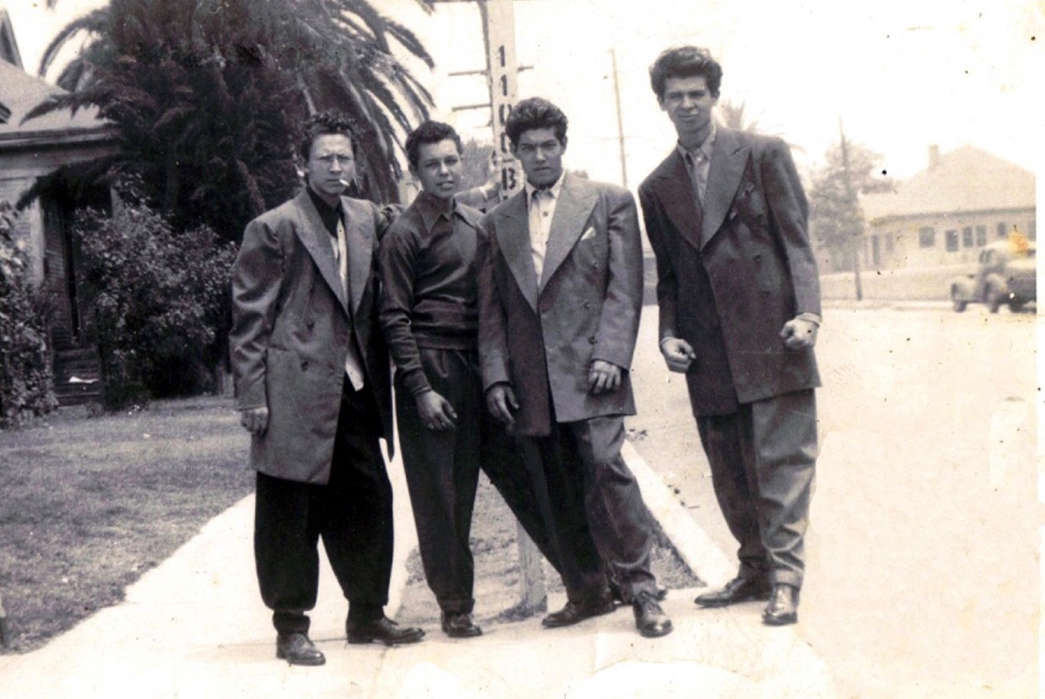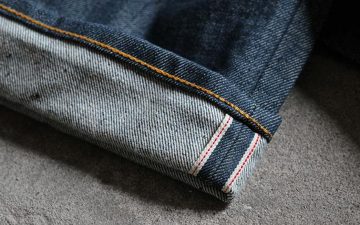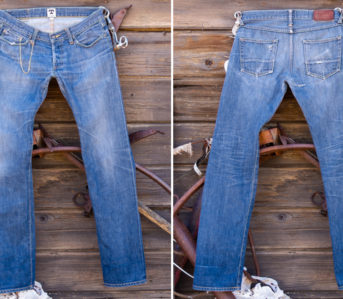In many ways, our niche community of the denim-obsessed is progressive. We value craftsmanship, ethical production, and antiquated—though, often superior—means of manufacturing. But in other, more expansive ways, the large majority of raw denim enthusiasts shy away from bolder styles and silhouettes. Namely, the wide-leg pant.
For many consumers, there’s some sort of mental block when it comes to these fuller cuts. But, a wide-leg pant that drapes and flows with your body does not mean the garment is ill-fitting. In fact, in a world where most people thoughtlessly lean towards the same skin-tight silhouettes, these fuller-cut styles stand out and signal fashion competency.
That’s not to say that every wide-legged pant should be defended (ahem, JNCO). But there is a rich history behind these larger, excessive styles. While a skin-tight cut recalls rebellion and rock-and-roll cool for most, there is a surfeit of historical examples in which the wide leg played the role of a stylish defector, going against the societal grain.
Today we’ll track those reactionary wide leg styles that rebelled against the trim and slim fits of their respective eras. Hopefully, with the help of historical hindsight, you’ll reconsider this oft-maligned style.
Edward VIII & England’s Mild-Mannered Bad Boys
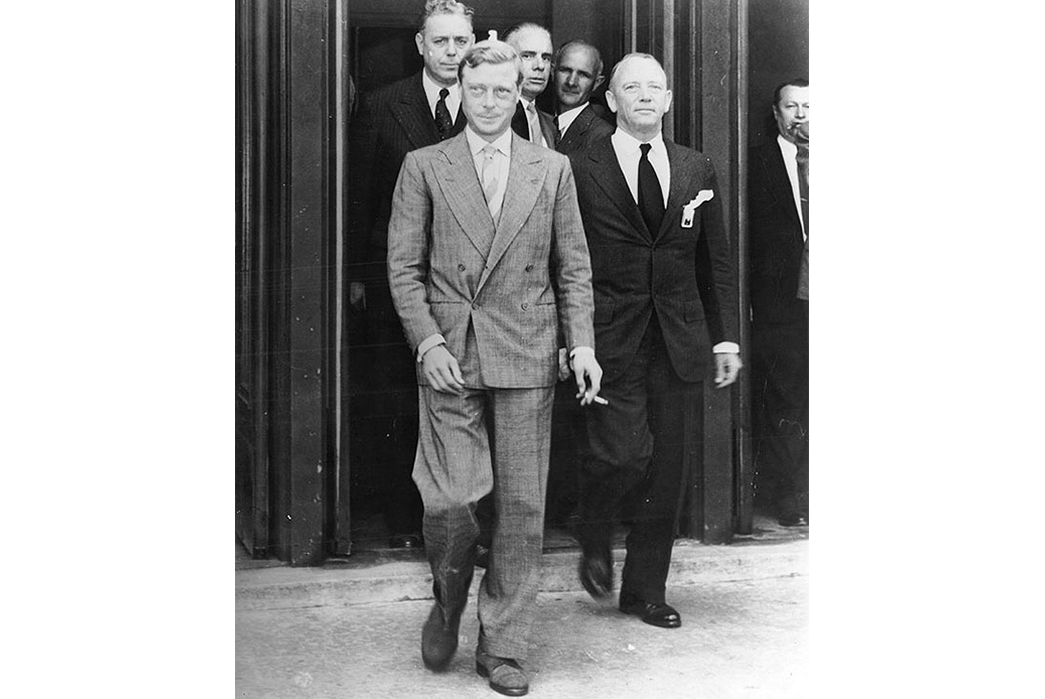
Duke of Windsor. Image via Balani Custom.
Edward was born in 1894 at the close of the Victorian Era in England. To hastily sum things up; he would go on to be crowned King Edward VIII and was then forced to abdicate the throne several months later. Post-abdication, he assumed the post of Duke of Windsor, which is the title by which he is best known.
From the start, he hated his position in the royalty. Edward hated tradition, hated uniform, and like many other young people of his era, just wanted to have fun. Philip Mann’s landmark book, The Dandy at Dusk, closely examines the Prince/King/Duke’s impact on modern men’s fashion, which mostly consisted of small tweaks to the agreed-upon modern man’s uniform. These tweaks are only radical when one considers the larger context for Edward’s small rebellions, one far more conservative and stodgy than today.
Edward came of age during the First World War and like many of his peers, became disillusioned with the whole “king and country” rigamarole. He was a part of that legendary “lost generation,” a term coined by the American writer, Gertrude Stein. Quoted by Hemingway in his A Moveable Feast, Stein puts it best, “You are a lost generation. You have no respect for anything. You drink yourselves to death.” But who could blame the young people who had survived WWI, the world’s first large-scale mechanized war? Edward, like Hemingway, drank and womanized once he was out of uniform, but there was an important distinction between the two. Edward was going to have to rule his country.
Edward, strictly monitored and criticized by the royal family (and occasionally the nation) had to restrain his displeasure and need for creative stimulation to his choices in suiting. His choices reflected larger trends in Britain, namely the famous “Oxford Bags.”
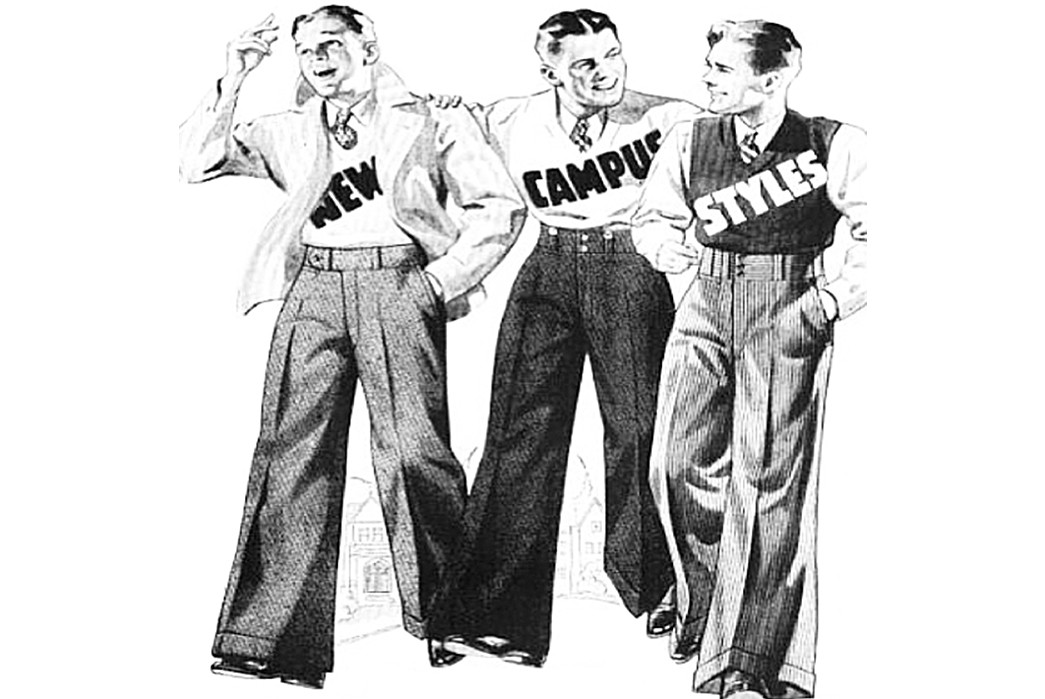
Oxford Bags. Image via Moving to Oxford.
Undergraduates at Oxford in the 1920s began wearing preposterously wide-legged trousers that became known as Oxford Bags. Not only did the trousers occasionally reach up to twenty-four inches at the hem, but many also had deep pleats that added additional baggage to the top block. Tailor and Cutter, a publication for the conservative tailoring community, weighed in. “The Almighty deliver us from suchlike excesses.” These excessively-cut garments were supremely comfortable and were a clear rejection of the trim Edwardian straight-leg of the previous generation. These pants were also a good choice for men who had only just escaped the discomfort of form-fitting army uniforms. Flaring out at the bottom, they were more reminiscent of a woman’s skirt than a man’s trouser, which horrified the public at large.
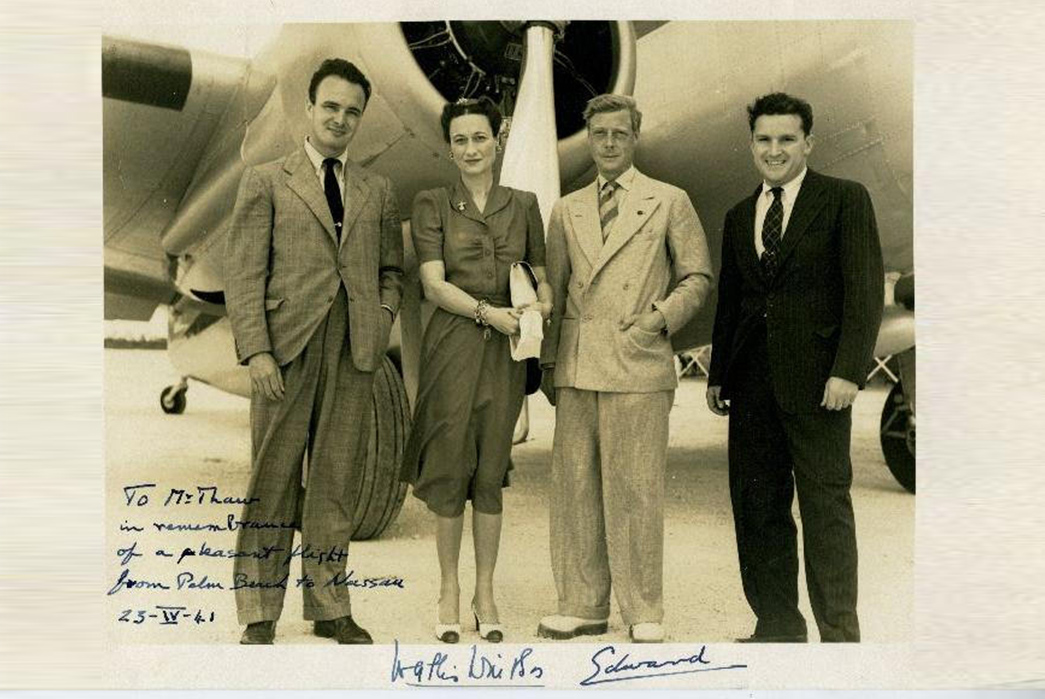
Duke of Windsor (second from right). Image via Royal Splendor.
The undergrads at Oxford could get away with obscenely large pants, but the Duke’s inner circle couldn’t let him dress quite so extravagantly. So, inch by inch, he persuaded his tailor to expand his hems. The Duke also popularized cuffs, which were necessary for these wider, flowing garments, although he was oft-mocked for wearing them in royal contexts. We also have Edward to thank for the double-breasted suit jacket, which he preferred, since it could be worn without a waistcoat. Again, a choice made for comfiness’ sake.
Edward’s extremely public pursuit of comfort and pleasure made his fashion statements seem ever more relevant in a changing and rebellious world. His unique style had immense pull across the Atlantic in the U.S.A., where he had his trousers made in an American style. High on the hips and worn with a belt, instead of the formal English extreme-high-waist and braces. Fred Astaire, a fashion icon in his own right, wrote of Edward, “HRH was unquestionably the best-dressed young man in the world and I was missing none of it.”
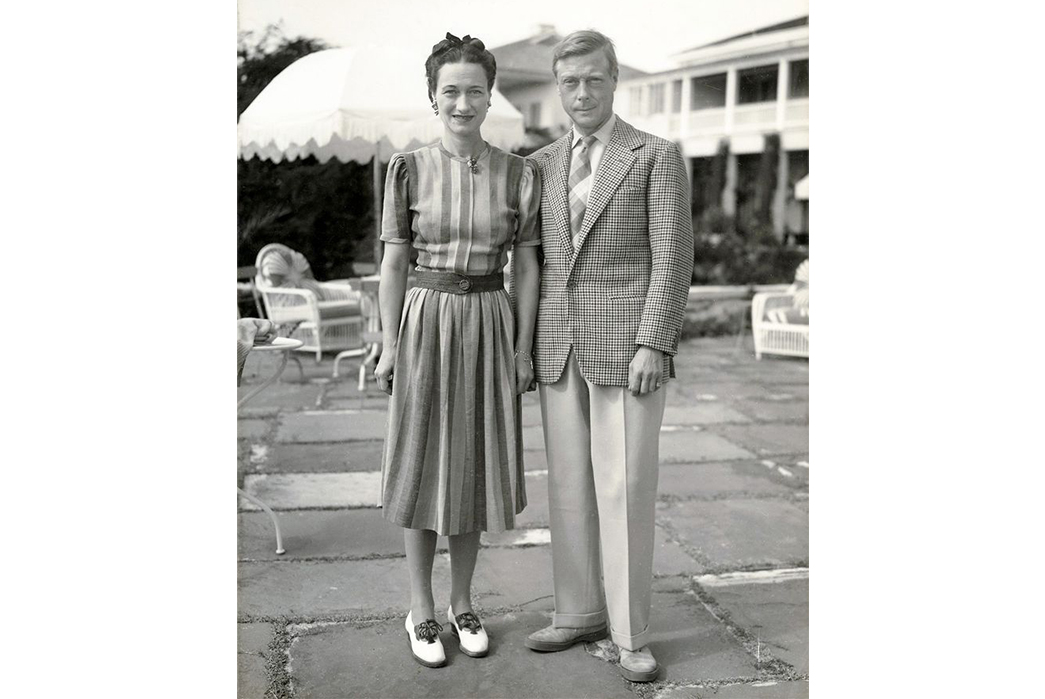
Edward and Wallis Simpson. Image via Pinterest
A great deal of Edward’s social relevance may be lost on a modern audience and his rebellion may seem rather quaint, considering he’s still wearing suits. His rebellion is emblematic of what is cool about the wider-leg pant. The slimmer, military look that dominated the U.K. during Edward’s youth was meant to convey power, virility, and might; but for Edward and many others, these things were redundant. The confident man, who knows his worth, need not prove anything to the world. There is a self-assuredness and a confidence to the garment that doesn’t cling, but swings and drapes and eases you out of the box and into the world of “don’t give a shit” cool.
The Zoot Suit vs. the U.S. Military

Zoot Suiters arrested in Los Angeles Image via Library of Congress
In 1942, the rather melodramatically-named “Sleepy Lagoon Murder,” sparked widespread fear across the Los Angeles area. A young man, named José Diaz, died after a fight broke out. The conflict took place between Mexican-American youths, and the media, as well as white Angelenos, took the opportunity to spread racist rumors about the young people. Quickly branding them as “criminals” and “juvenile delinquents,” the city continued a long-standing tradition of bad-mouthing and racially profiling latinx people in their city.
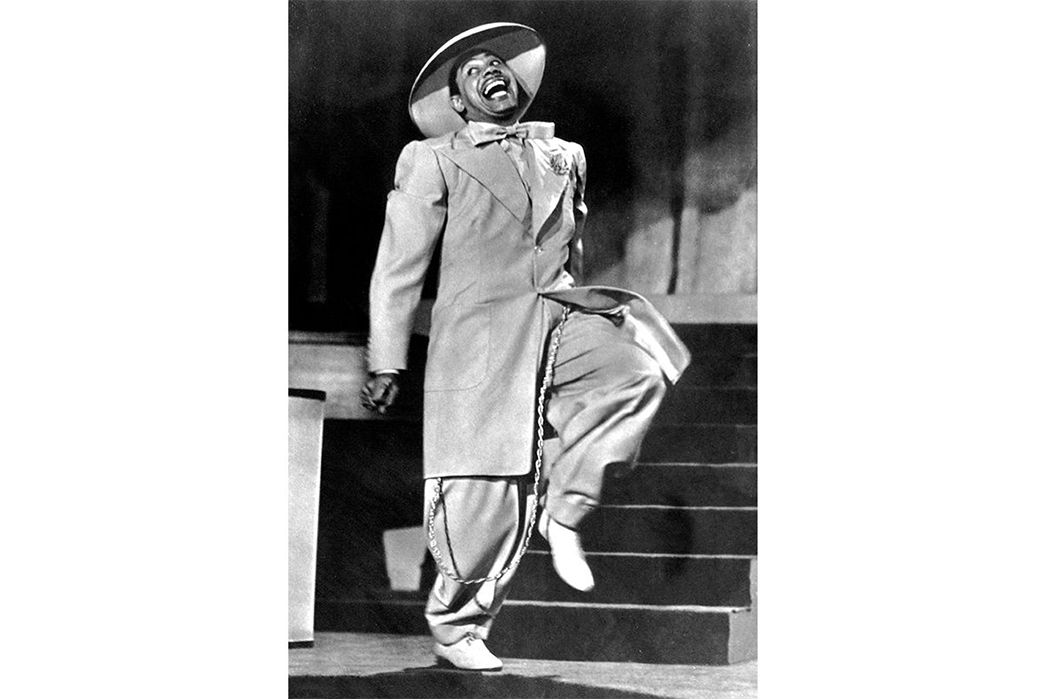
Cab Calloway in a drop suit. Image via Smithsonian Magazine.
The violence was associated with the zoot suit, an extremely popular style among non-white young people of the era. Based on the Drape Suit, a popular style among jazz musicians, the zoot suit had wide, pleated, pegged pants that were typically worn with a long chain and longer coat.
The zoot suit was extravagant and excessive, which drew intense criticism with the beginning of fabric rationing when World War II broke out. Americans were expected to tighten their belts (and pants) and wear clothes that used less fabric needed for the war effort. These regulations were so strict that Levi’s wasn’t even allowed to use thread for the arcuates on their back pockets, as it was deemed an imprudent use of precious materials. Clothes slimmed down, much as they had looked in the Duke of Windsor’s wartime youth back in England. Cuffs, pleats, and long jackets were all officially banned.
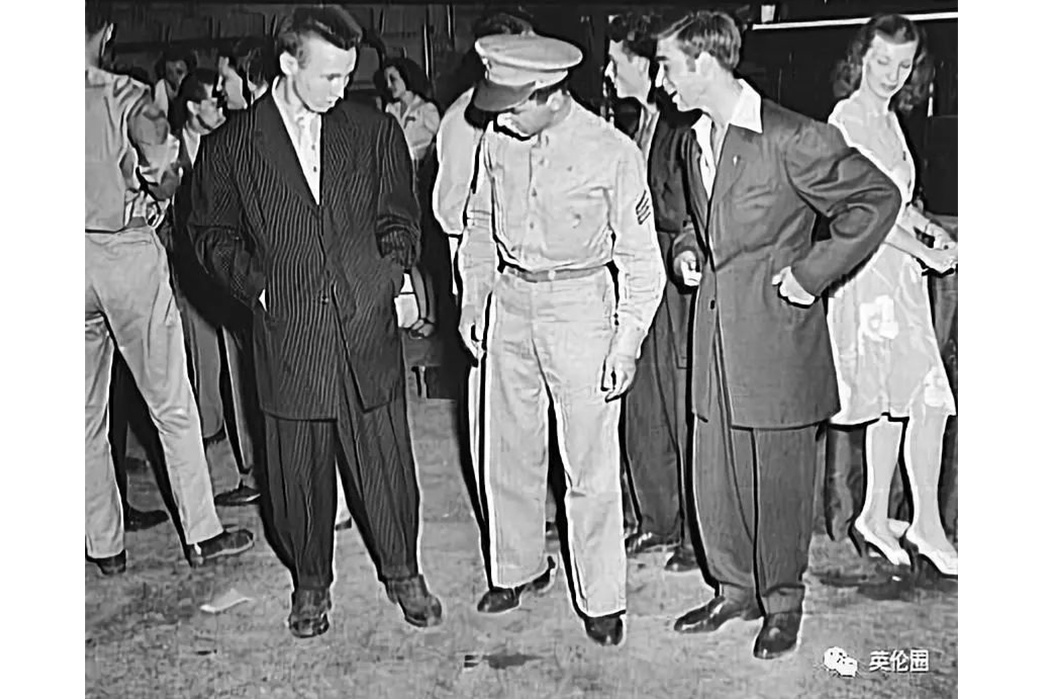
Zoot suiters next to a serviceman. Image via Wikipedia.
Discontent had been brewing among Mexican-Americans living in LA for some time—well, really since the city was founded. Strict racial zoning laws prevented non-whites from living in the nicer parts of the city and the powers that be seemed intent on restricting Mexican-American upward mobility. Even though the U.S. was committing itself to joining in the Second World War and a wave of patriotism was sweeping the country, many latinx and other people of color didn’t exactly feel included. Executive Order 9066 had interned Japanese-Americans in concentration camps in the most hostile parts of the American West and African-Americans, when they were allowed to join the war efforts, were shunted off into the most dangerous and unrewarding divisions in the Army.
In the immediate aftermath of the Sleepy Lagoon Murder, the LAPD rounded up nearly 600 young Mexican men around the city for questioning. The tell-tale sign of “deviancy” was the young people’s clothing. Those draped, excessive suits stuck out like sore thumbs among folks wearing the state-ordained slim suits of the time. Even though Mexican-Americans joined up en masse (350,000 would ultimately serve), those who wore the coolest, edgiest suit of the day were condemned as un-American and unpatriotic.
Buying zoot suits from bootleg tailors may have been motivated by some degree of discontent with the state of the country, but the simpler reason is that they were cool. They had taken on a rebellious tint after the fabric rationing, but they were still relatively easy to get. Unfortunately, an intensely racist atmosphere made this harmless fashion statement into a far more dangerous situation. White youths of the same era were also rebelling—albeit by wearing jeans in suburban neighborhoods—but only for young people of color could an edgy wardrobe choice spell danger.
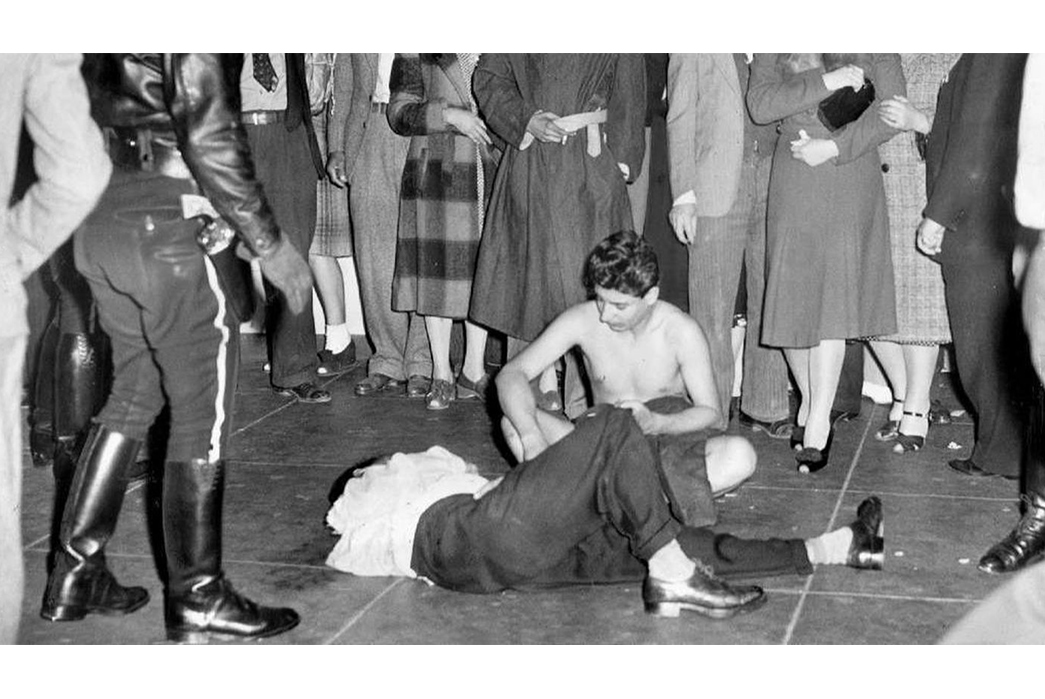
Mexican-American men, stripped of their clothes and beaten. Image via Associated Press.
In the summer of 1943, thousands of military personnel were in California. Either in the process of or finished with their training, they were getting ready to ship out to do battle with the forces of fascism. An altercation between a group of zoot suit wearing Latino men and servicemen escalated into the infamous Zoot Suit Riots. Thousands of servicemen and white civilians patrolled their cities, hunting through bars and movie theaters to find and brutally beat any Mexican, Filipino, or African-American men they could find.
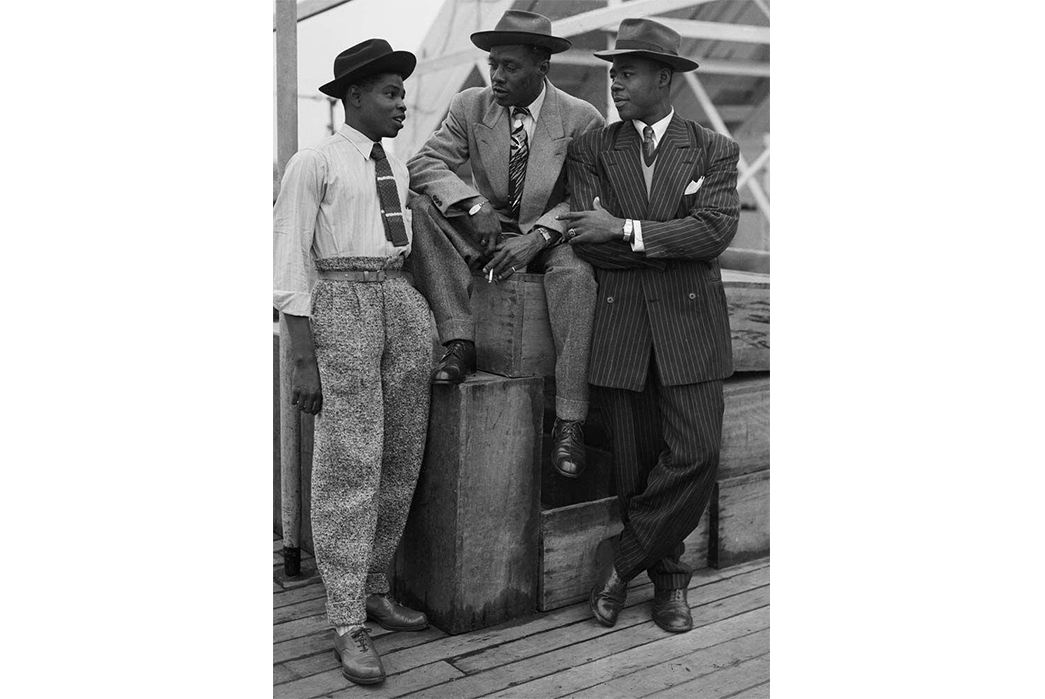
More zoot suit wearers. Image via Reddit.
Men in zoot suits were particularly popular targets for this racist violence. Some had their clothes torn from their bodies and in one case, even urinated on. While it’s clear that these riots were more about racism than about fashion, once the dust settled, the bold, draped suits took on a more radical meaning. Large, strategically ill-fitting trousers and jackets might have seemed unfashionable in any other era, but when slim clothes were endorsed by an oppressive state apparatus, they were even more rebellious than the badass young people of the era knew.
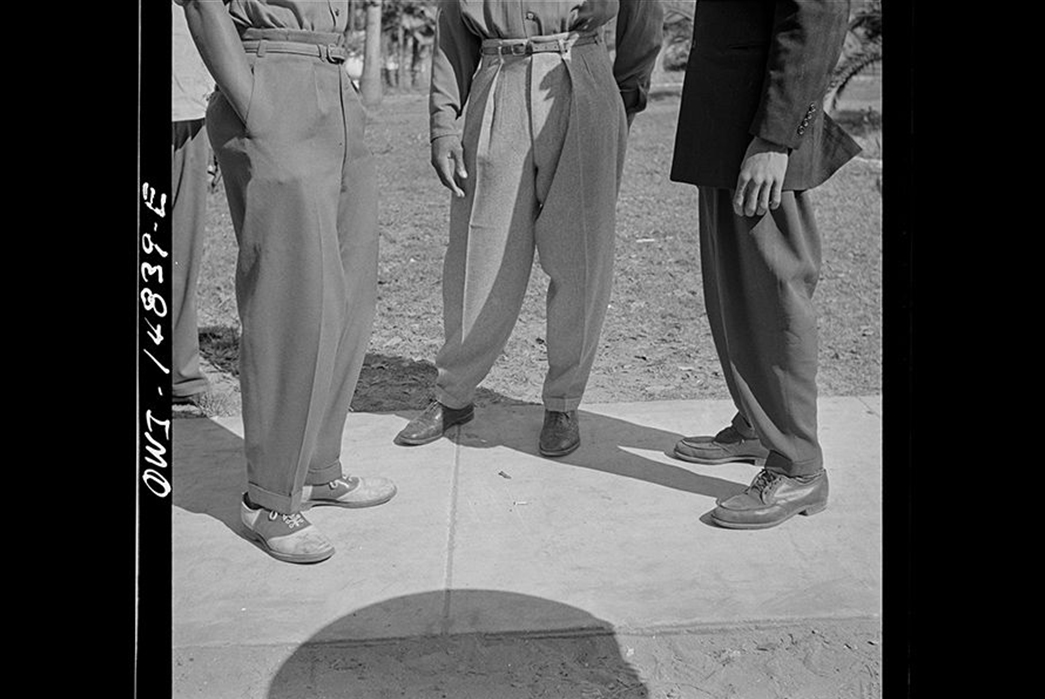
Image via Smithsonian.
Certain aspects of the zoot suit haven’t aged particularly well: specifically, the huge suit jacket. However; the large, pegged trouser worn high on the hips has maintained a relatively strong presence in streetwear. And nowadays, it seems that every Instagram fashion blogger has some wallet chain variant hanging from their belt loops.
We imagine that in wartime and post-war America that wearing tight 501s was the essence of cool-cat rebellion, but in fact, it was these young men and women of color in artfully indulgent suits that epitomized fashionable rebellion. The LAPD never formed a “vengeance squad” to beat up white greasers, but they definitely exercised this vigilante method during the riots.
Conclusion
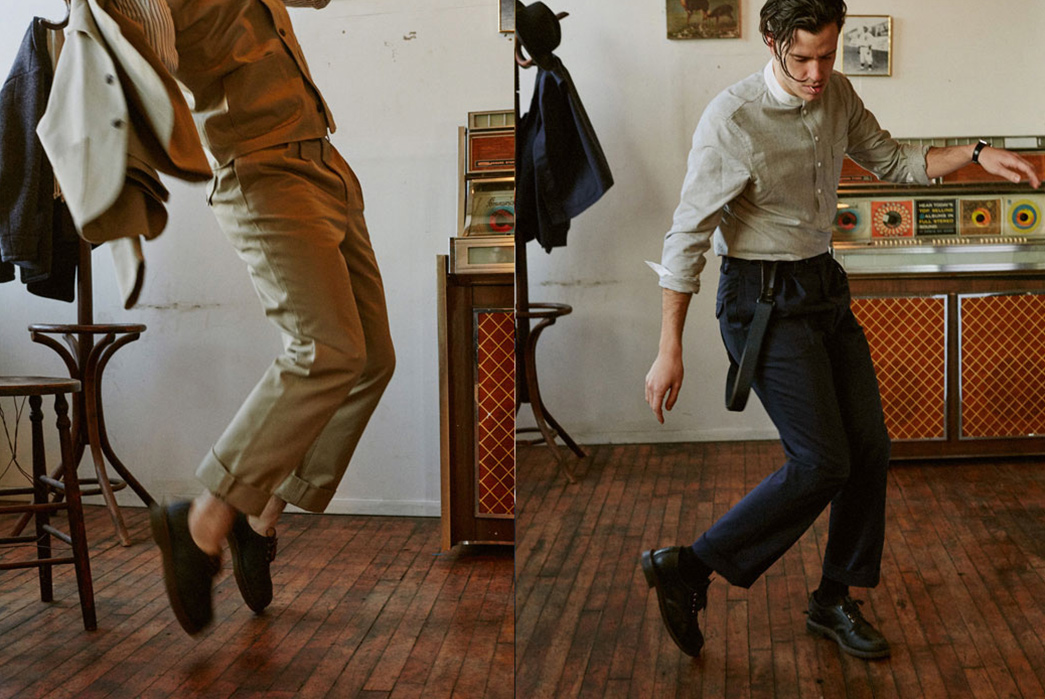
Knickerbocker MFG Officer Chinos. Image via Knickerbocker.
Two different styles, two very different contexts. But in both, these garments that offended slimmer sensibilities conveyed a great deal of angst and ingenuity. Rather than serving as a frumpy dad fit, wide-leg pants today instead further a tradition of rebellion and discontent, and showcase a cut that stands away from the pack.
Slim pants may no longer be synonymous with the ruling class, nor are they state-ordained, but they’ve become so common today as to be almost invisible. They are so ubiquitous that we can hardly see them for what they are: an option, not the rule of law. The same is true for jeans. Shockingly tight jeans certainly have their own history of rebelliousness, but not so much anymore. When everyone rebels, is anyone? The overwhelming presence of these cuts is evidence of a mindlessness that most people have in their shopping endeavors.
Do wide-leg pants show signs of rebellion? No. At least, certainly not in the way a zoot suit would have been in the 1940s. But by wearing a wider garment in today’s fashion climate, you are making a choice, which is more than can be said for the vast majority of consumers. And if you’re looking to actually start a rebellion, you might need some room.

